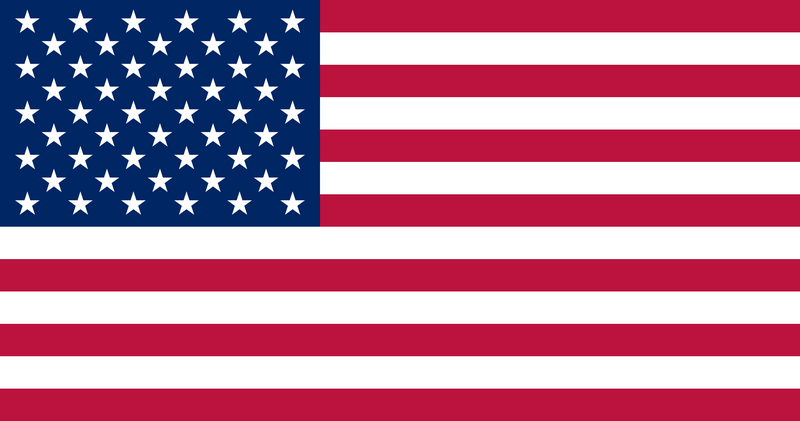It seems like the bottled water industry is always coming out with a new product.
First it was mineral water and spring water. Then it was carbonated waters. Then it was water enhanced with vitamins, protein, and flavors (mint, cucumber, and… maple?). Then water packaging changed from bottles to boxes. Now, we have non-alcoholic water flavored with hops.
Despite the surge in fancy water, two types of water have maintained a stronghold on the market: mineral water and spring water.
But what do the titles "mineral water" and "spring water" mean? And when it comes to mineral water versus spring water, which is the better choice? Is there another choice that is just as delicious?
Where does drinking water come from?
Most of our water supply comes from lakes, rivers, and groundwater.
Depending on your public drinking water source, the water may undergo a series of treatments, including coagulation and flocculation (in which the water is filtered with chemicals), sedimentation, filtration, and disinfection (chlorine or chloramine are commonly used to kill parasites, bacteria, viruses, and germs).
Where you live can affect not only the source of your water but the quality of the water. Water in agricultural areas may contain nitrates or fertilizers.
Throughout this filtration process, many of the natural minerals found in water are filtered out. While public water sources add minerals, such as fluoride, back into the water, not all minerals are added to public water after filtration.
Should drinking water contain minerals?
Ideally, yes! Humans need adequate amounts of minerals, such as calcium, phosphorus, potassium, sodium, chloride, magnesium, iron, zinc, iodine, sulfur, cobalt, copper, fluoride, manganese, and selenium.
The human body cannot make its own minerals, so it needs to absorb them from foods (and water).
The most common minerals found in mineral water include:
- Calcium
- Magnesium
- Potassium
- Sodium
- Bicarbonate
- Iron
- Zinc
FDA Regulation of Mineral Water and Spring Water
The FDA regulates the marketing and contents of both bottled mineral water and spring water.
Bottled water marketed as mineral water must contain, “no less than 250 parts per million (ppm) total dissolved solids; it must come from a geologically and physically protected underground water source; and it must contain no added minerals.”
Spring water must be sourced from an underground water source that naturally rises to the surface. Manufacturers may collect the water from the source itself but must prove that the water has the same components as the water that flows to the surface on its own.
Does this apply to seltzer water, club soda, sparkling water, and soda waters, too? Confusingly, no. These waters are classified as soft drinks, which are also regulated by the FDA — just by different standards.
Mineral Water Vs Spring Water: Which Is Better?
Both mineral water and spring water contain minerals. But which is better, and why are they labeled differently?
What is mineral water?
Mineral water first became popular in the 19th century when New York City’s elite would race up to Saratoga Springs in the summer to escape the harsh city heat. Gilded Age high society would drink and bathe in mineral water.
This “healing” water was also sold in drug stores and marketed to the general public. Though it may not have actually been healing, this water was one of the few safe sources of drinking water in many urban areas (because water was unhealthy, many people turned to beer, which was deemed safer than water at the time).
Bottled mineral water made a major comeback in the 1970s when the French brand Perrier began marketing its bottled water to a mainstream U.S. audience.
Now, mineral water is a household term, and some studies show mineral water is healthier than regular water.
Just some of the minerals found in mineral water include:
- Calcium
- Magnesium
- Potassium
- Sodium
- Bicarbonate
- Iron
- Zinc
What is spring water?
Water that comes from an aquifer below the natural water table is classified as spring water.
Spring water’s history runs parallel to mineral water’s. Brands like Arrowhead and Ozarka actually date back to the late 1800s.
When municipal water supplies began chlorinating drinking water by the early 20th century, many of these brands became obsolete, as consumers could now safely drink from city water supplies.
Though its name may not suggest it, spring water also contains minerals! Just a few of the common minerals found in spring water are:
- Magnesium
- Potassium
- Calcium
- Sodium
Mineral Water Vs Spring Water: Benefits & Sourcing
Both mineral water and spring water may offer health benefits.
Spring water is considered a clean source of drinking water. Since bottled spring water is so heavily regulated and tested by the FDA, we can safely assume that it’s free of bacteria and toxins and hasn’t been treated with chemicals.
Some studies show that the minerals in both mineral and spring water may provide health benefits. Minerals may help aid in bone development, digestion, lipid metabolism, and regulate cell permeability.
However, it's important to remember that many bottled water brands use plastic, which means that microplastics enter the water over time. A recent study found that 93% of bottled water brands contain microplastics.
Mineralized Water: Adding Minerals to Water
Bottled water sold as mineral water must contain minerals at the time it's sourced and bottled, and bottling companies can’t add those minerals later and market it as mineral water.
But that doesn’t mean that adding minerals after the filtering process isn’t beneficial. This is what is meant by "mineralized" water.
Some studies show that magnesium-enriched water may increase the urinary excretion of minerals in those with a deficiency.
Water filters, such as Wisewell’s full-spectrum water filtration system, not only remove unwanted particles (like heavy metals, forever chemicals, organic compounds, and sediment) but also naturally add beneficial minerals (and good flavor) back into your water. This is referred to as "mineralized" water.
Mineral water and spring water both have their benefits, but why not opt for an option that is cheaper and more sustainable? Wisewell turns your tap water into delicious, safe, mineralized drinking water with the tap of a button. Learn more here: https://www.wisewell.com/
---
How Do We Get Our Drinking Water In The U.S.? https://www.npr.org/2016/04/14/473806134/how-do-we-get-our-drinking-water-in-the-u-s
Vitamins and Minerals: https://www.nccih.nih.gov/health/vitamins-and-minerals
Bottled Water Regulation and the FDA: https://www.food-safety.com/articles/4373-bottled-water-regulation-and-the-fda#:~:text=For%20example%2C%20a%20bottle%20labeled,must%20contain%20no%20added%20minerals.
Bottled Water Everywhere: Keeping it Safe: https://www.fda.gov/consumers/consumer-updates/bottled-water-everywhere-keeping-it-safe
How Bottled Water Became America's Most Popular Beverage: https://www.seriouseats.com/how-bottled-water-became-americas-most-popular-beverage#:~:text=In%20the%201970s%2C%20just%20350,waters%20bottled%20from%20natural%20springs.
A Tipple or Two? It Was Safer Than Water: https://www.nytimes.com/2012/05/25/arts/design/beer-here-on-brewing-at-new-york-historical-society.html
Natural mineral water: chemical characteristics and health effects: https://www.ncbi.nlm.nih.gov/pmc/articles/PMC5318167/
Study Finds Microplastics in 93% of Bottled Water: https://www.forbes.com/sites/niallmccarthy/2018/03/16/study-finds-microplastics-in-93-percent-of-bottled-water-infographic/?sh=6dc498273fa0
Mineral water intake reduces blood pressure among subjects with low urinary magnesium and calcium levels: https://www.ncbi.nlm.nih.gov/pmc/articles/PMC535900/


